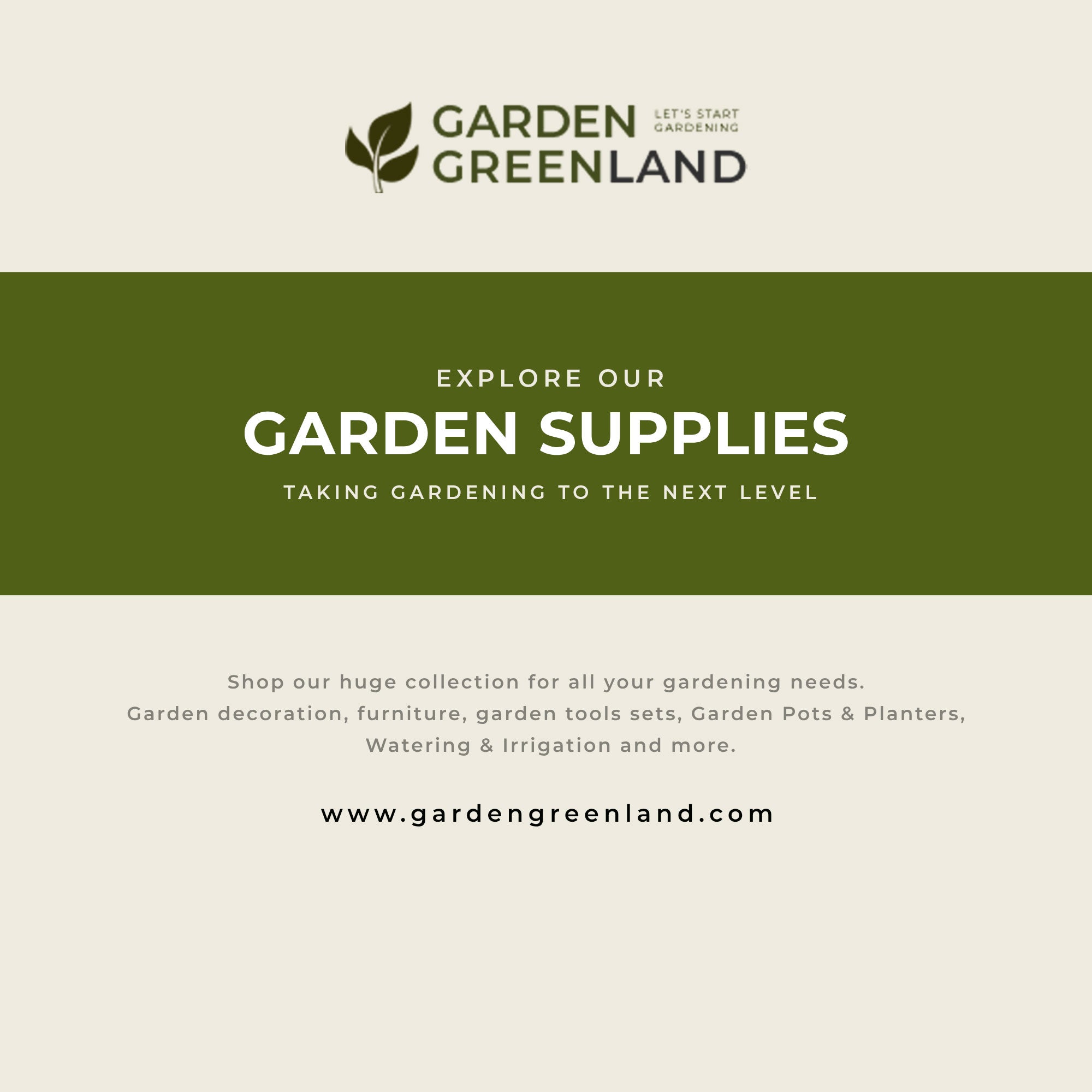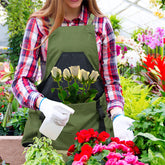What to Grow in 10 Gallon Grow Bags: A Gardener's Guide to Bountiful Harvests
Table of Contents
- Introduction
- Understanding Grow Bags
- Choosing the Right Size Grow Bag
- Soil Selection for Grow Bags
- Watering Techniques for Grow Bags
- Top Vegetables to Grow in 10 Gallon Grow Bags
- Maintenance and Care for Grow Bags
- Conclusion
Introduction
Have you ever wondered how to maximize your gardening space while still enjoying bountiful harvests? With the rise of urban gardening and the quest for sustainable practices, many gardeners are turning to innovative solutions like grow bags. Among these, the 10-gallon grow bag stands out for its versatility and effectiveness.
At Garden Greenland, we believe that everyone deserves to connect with nature and cultivate their green thumb. Our journey began with a passion for the earth and a commitment to redefining the home gardening experience. This blog post will delve into what you can grow in 10-gallon grow bags, providing you with a comprehensive guide to make the most of this gardening method.
In the following sections, we will explore the benefits of using grow bags, the types of vegetables and plants that thrive in them, and tips for successful gardening. By the end, you'll have a clearer understanding of how to utilize 10-gallon grow bags to enrich your gardening experience, supported by our premium gardening products that ensure quality and performance.
Understanding Grow Bags
What Are Grow Bags?
Grow bags are lightweight planting containers typically made from breathable fabric. They allow for excellent drainage and aeration, promoting healthy root systems that are less prone to diseases like root rot. Their portability makes them ideal for small spaces, making them a perfect fit for urban gardeners or those with limited planting areas.
Benefits of Using Grow Bags
- Enhanced Root Development: The breathable material encourages air circulation, preventing root circling and promoting fibrous root systems.
- Improved Drainage: Grow bags allow excess water to escape, reducing the risk of overwatering and creating a healthy environment for your plants.
- Temperature Control: The fabric construction helps maintain an optimal soil temperature, protecting roots during extreme weather.
- Portability: Grow bags are easy to move, allowing you to reposition your plants for optimal sunlight or protection from harsh weather conditions.
Drawbacks of Grow Bags
While the benefits are compelling, there are some considerations to keep in mind:
- Frequent Watering: Due to their superior drainage, grow bags can dry out quickly, requiring more frequent watering compared to traditional pots.
- Soil Temperature Fluctuations: In extreme heat, soil temperatures can rise, which may stress your plants. Choosing the right location and providing shade during peak sunlight can mitigate this issue.
Choosing the Right Size Grow Bag
Why 10 Gallons?
A 10-gallon grow bag is an excellent choice for a variety of plants. It offers ample space for root development while maintaining portability. This size is perfect for larger vegetable varieties and can accommodate multiple plants depending on their size and spacing needs.
Ideal Plants for 10-Gallon Grow Bags
- Tomatoes: Both determinate and indeterminate varieties thrive in 10-gallon bags, providing ample space for root growth.
- Cucumbers: Vining types benefit from the extra room, and you can pair them with a trellis for vertical growth.
- Squash and Zucchini: These plants have larger root systems and require the space that a 10-gallon bag provides.
- Peppers: Both sweet and hot varieties flourish in this size, ensuring you have enough nutrients for robust growth.
Soil Selection for Grow Bags
Creating the Perfect Soil Mix
The soil mix is crucial for the success of your plants in grow bags. At Garden Greenland, we recommend a blend that retains moisture while providing excellent drainage. Here’s a simple formula:
- 30% Compost: Provides essential nutrients and improves soil structure.
- 70% Potting Mix: A high-quality, organic potting mix serves as the base.
- 10-20% Perlite or Vermiculite: Enhances drainage and aeration.
Tips for Soil Preparation
- Avoid Heavy Garden Soil: Standard garden soil can compact in grow bags, leading to poor drainage.
- Incorporate Organic Fertilizer: Start with a slow-release organic fertilizer to provide a steady nutrient supply.
Watering Techniques for Grow Bags
How Often to Water
Grow bags tend to dry out faster than traditional pots due to their breathable fabric. It's essential to monitor soil moisture closely. Here are some watering tips:
- Water when the top inch of soil feels dry.
- Use a watering method that allows the soil to absorb water gradually to avoid runoff.
Fertilizing Your Plants
Since grow bags have limited soil, plants may require additional nutrients throughout the growing season. Here’s how to keep your plants healthy:
- Liquid Fertilizer: Apply a balanced, organic liquid fertilizer every 2-4 weeks to replenish nutrients.
- Top-Dressing: Consider adding compost or organic matter to the top of the soil to provide ongoing nutrients.
Top Vegetables to Grow in 10 Gallon Grow Bags
A Bountiful Harvest Awaits
Using 10-gallon grow bags allows for a diverse range of vegetables and herbs. Here’s our curated list of top picks:
- Tomatoes: Ideal for both small and larger varieties, ensuring a fruitful harvest.
- Peppers: Sweet and hot peppers thrive in this spacious environment.
- Eggplants: These heat-loving plants flourish in the warmth of grow bags.
- Cucumbers: Both bush and vining types can be grown, with the latter benefiting from a trellis.
- Squash & Zucchini: Smaller varieties fit perfectly in 10-gallon bags, providing ample room for their growth.
- Herbs: Basil, rosemary, and thyme can be grown alongside vegetables, enhancing flavor in your meals.
- Dwarf Fruit Trees: Consider dwarf varieties of fruit trees, such as citrus or apple, that can thrive in a container for several years.
Growing Tips for Each Vegetable
- Tomatoes: Use stakes or cages for support, ensuring they have the necessary structure as they grow.
- Cucumbers: Install a trellis to maximize space and encourage upward growth.
- Squash: Monitor for pests and diseases, as these can affect your harvest.
Maintenance and Care for Grow Bags
Seasonal Care
Regular maintenance is crucial for successful gardening in grow bags. Here are some key practices to adopt:
- Rotate Crops: To prevent soil depletion and pest build-up, rotate your crops each season.
- Monitor for Pests: Regularly check for signs of pests and diseases, addressing issues promptly to protect your plants.
End of Season Care
At the end of the growing season, consider these steps:
- Soil Disposal: Dispose of any remaining soil responsibly and clean your grow bags for future use.
- Plant Selection for Next Season: Planning ahead can help you choose complementary crops for the next growing season.
Conclusion
In conclusion, 10-gallon grow bags offer a sustainable and efficient way to grow a wide variety of vegetables and herbs right at home. By choosing the right plants, preparing a suitable soil mix, and maintaining proper watering and fertilizing techniques, you can enjoy a bountiful harvest while connecting with nature.
At Garden Greenland, we are dedicated to helping you enhance your gardening experience. Our premium gardening products, including high-quality grow bags, are designed to support your journey in creating a beautiful and productive garden.
FAQ
1. Can I grow larger plants in a 10-gallon grow bag? Yes, a 10-gallon grow bag is suitable for larger plants like tomatoes and squash, providing enough space for their root systems to thrive.
2. How often should I water my plants in grow bags? Watering frequency depends on weather conditions, but generally, you should water when the top inch of soil feels dry.
3. What type of fertilizer should I use for grow bags? A balanced organic liquid fertilizer is recommended every 2-4 weeks to replenish nutrients in the limited soil of grow bags.
4. Can I grow flowers in 10-gallon grow bags? Absolutely! Many flowers, such as marigolds and zinnias, can thrive in grow bags, adding color and beauty to your garden.
5. What is the best time to plant in grow bags? You can start planting after the last frost in your area, ensuring that the soil is warm enough for optimal growth.
By embracing the versatility of grow bags and incorporating our premium products from Garden Greenland, you can enjoy a flourishing garden, no matter the size of your space. Let’s embark on this gardening adventure together!









